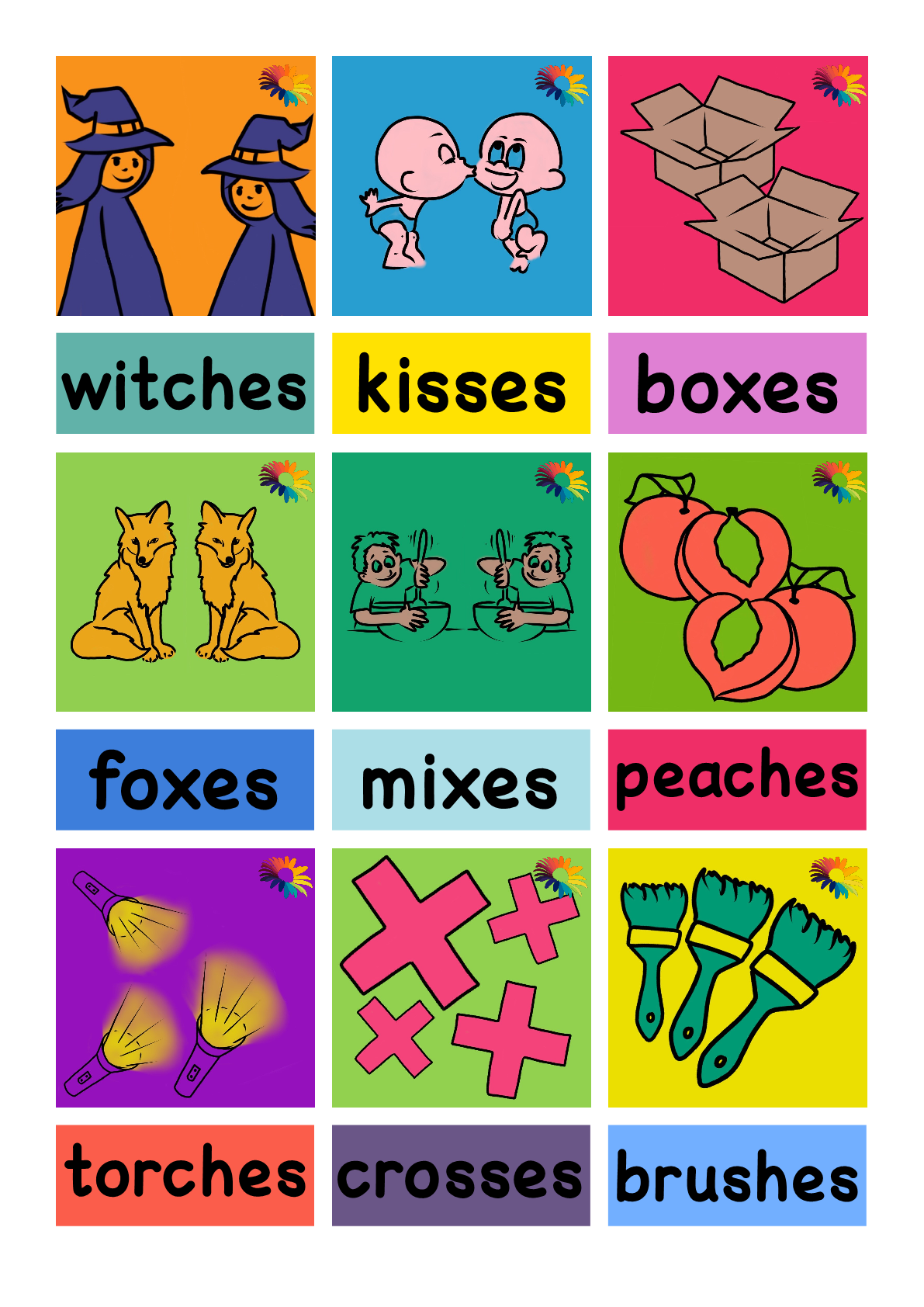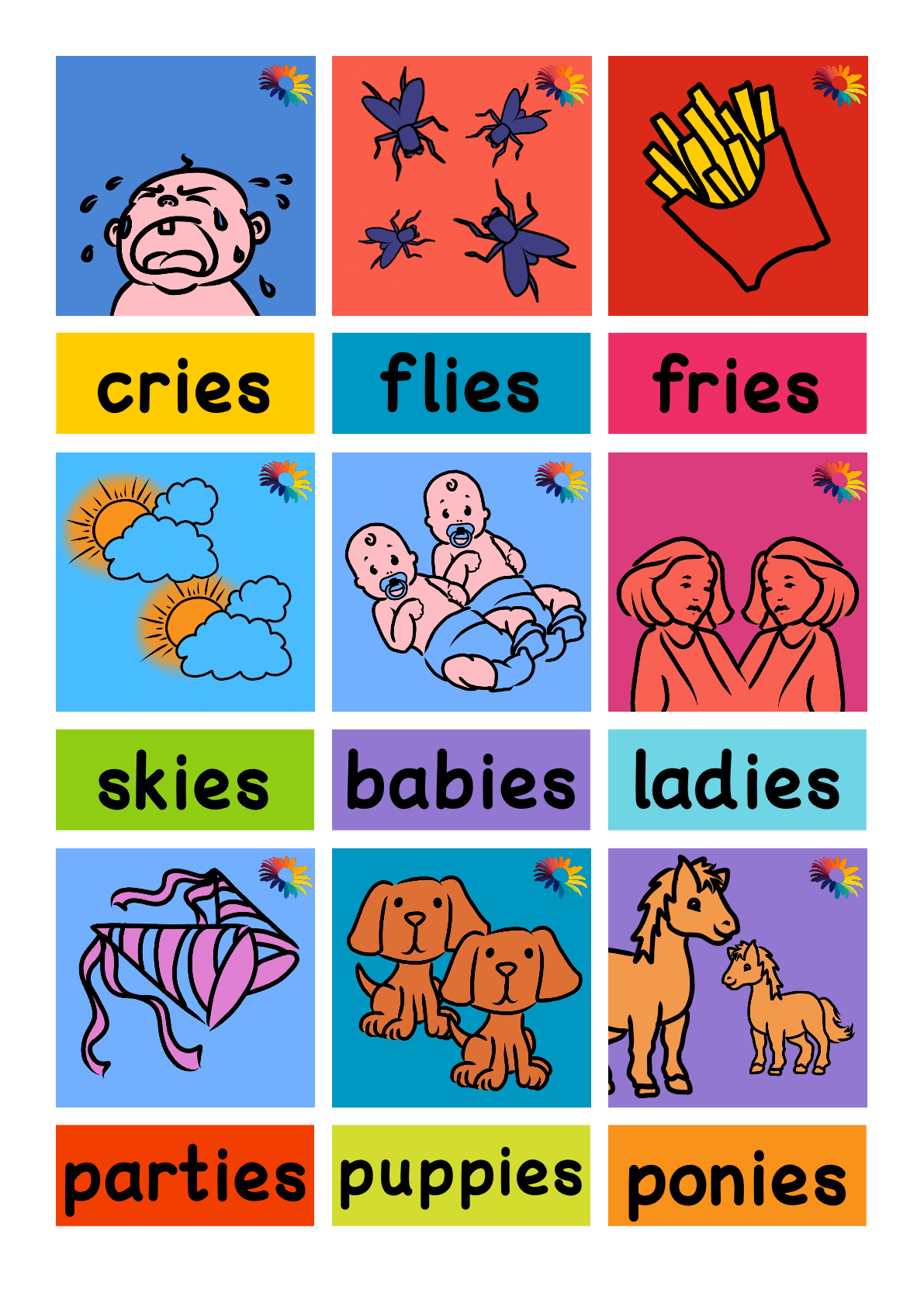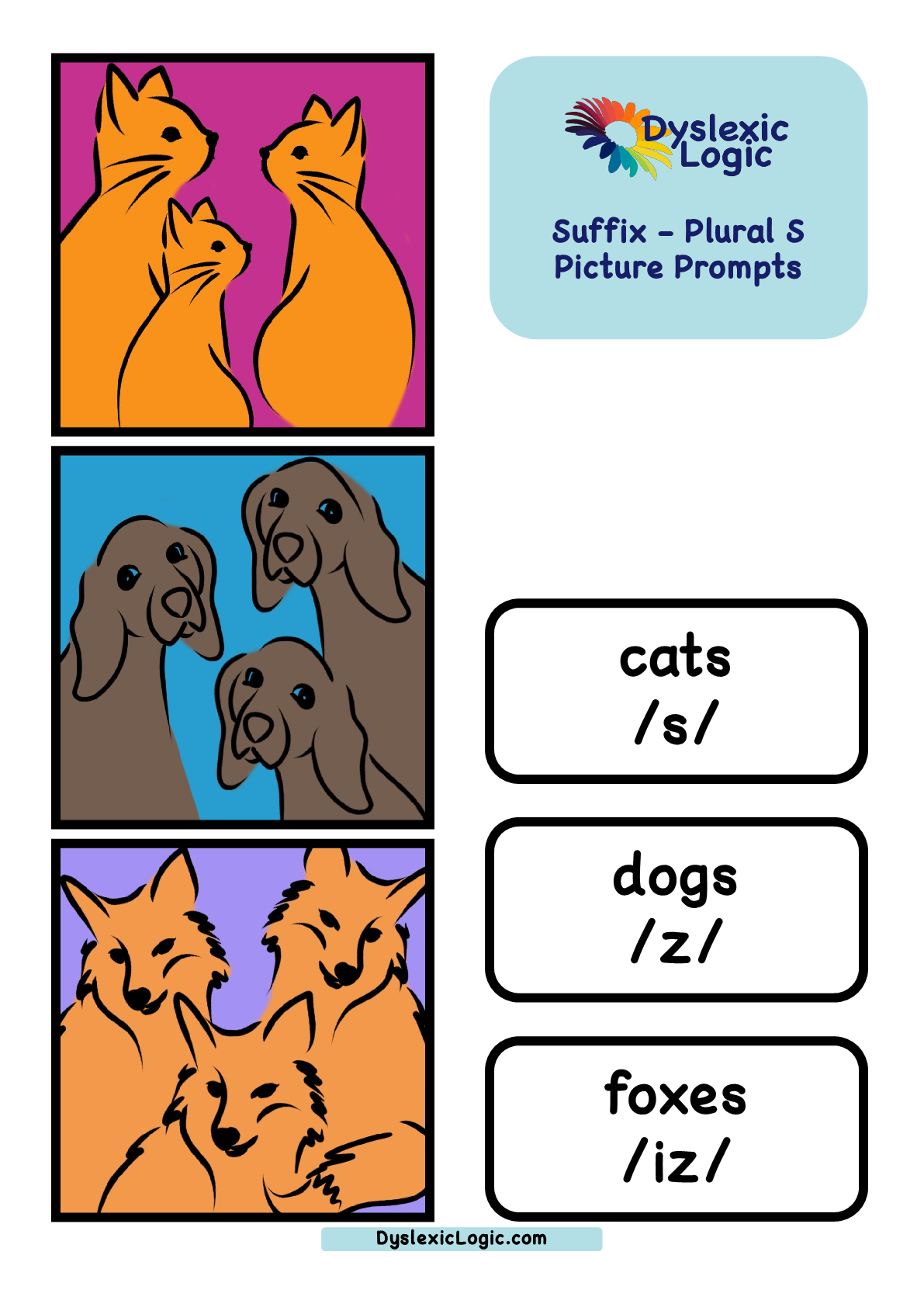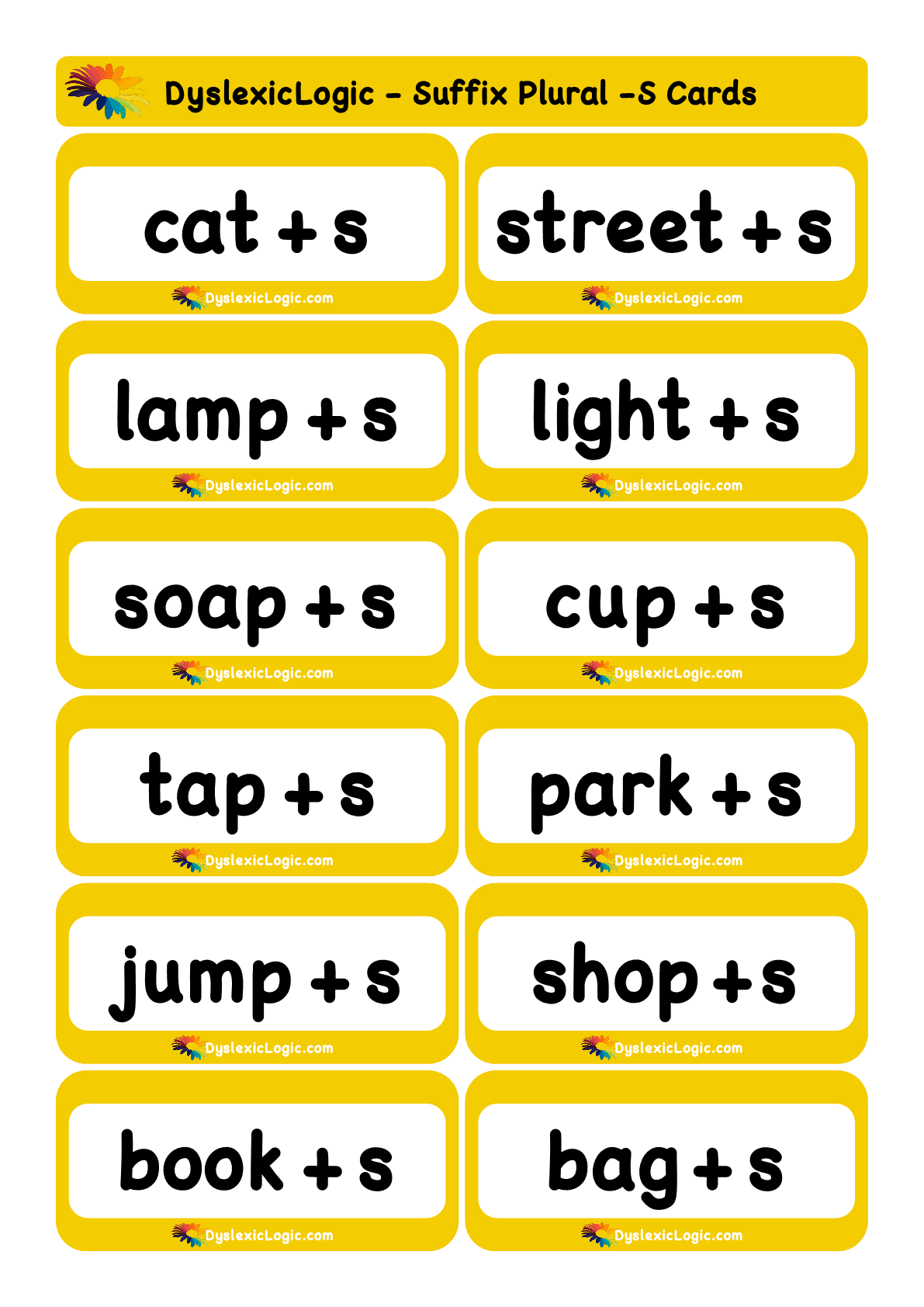Plurals - Teaching Resources
These resources allow children to practice writing plurals for words ending with a /s/ (eg rat - rats), a /z/ (eg car - cars), those that change a ‘y’ to an ‘i’ before adding ‘-es’ (eg cry - cries), and those that end with the sounds /sh/ /ch/ /s/ and /x/ and therefore take '-ies) as a plural.
/s/ words
/z/ words
/iz/ words
y to i words
Simplifying Teaching Plurals
In English plurals are formed by adding an -s to the end of the word. However, there are some words that end in a y, which is changed to ‘i’ before adding -es. There are also words that end in the /s/, /sh/, /ch/ and /x/ sounds which take an -es sending. Added to this, most words actually sound like they have a final /z/ when they are plural.
Children with additional literacy needs are often completely thrown when adults start talking about the ‘s’ in words like ‘dogs’ and ‘cars’ as phonetically speaking, there isn’t one.
They also have difficulty knowing when to add -es rather than -s.
By teaching plurals by explicitly teaching the /s/ and /z/ sound as indicating an ‘-s’ ending, and hearing the extra beat /-iz/ of an ‘-ies’ ending children no longer need to remember an arbitrary list of final letters - simply to listen to what happens when they move from a singular to a plural form.
By teaching that ‘y’ at the end of a word is actually a ‘shy i’ then it becomes more natural that when additional letters are added to the end of the word the ‘y’ would revert back to an ‘i’. This is true for all suffixes so again avoids teaching many fragmented rules that need to be remembered. The same rule explains many spelling shifts in English - sleepy to sleepily, cry to cried, and crazy to craziest.








